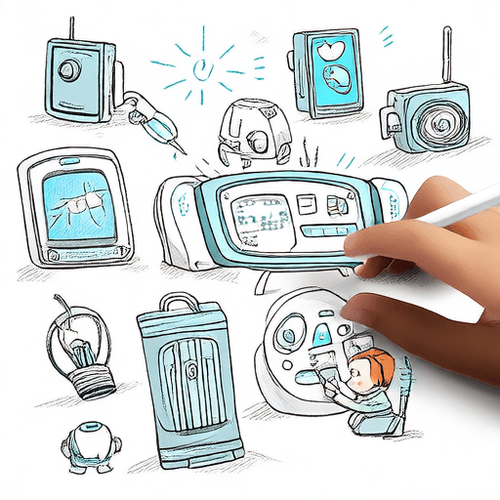Mastering Home Assistant Custom Lovelace Cards: Elevating Your Dashboard Experience

NGC 224
DIY Smart Home Creator
Unlocking Lovelace's Full Potential with Custom Cards
Home Assistant's Lovelace dashboard is a powerful tool for visualizing and controlling your smart home. While the built-in cards cover many common use cases, the true magic happens when you integrate custom cards. These community-developed additions offer unique functionalities, stunning aesthetics, and specialized controls that can transform your dashboard from functional to exceptional.
Custom cards allow you to display data in novel ways, create complex controls with simple interfaces, or integrate devices and services that don't have standard card representations. Whether you want a minimalist look, detailed energy graphs, or specific controls for your media setup, there's likely a custom card that fits the bill.
This guide will walk you through the process of discovering, installing, and effectively using custom Lovelace cards, primarily leveraging the Home Assistant Community Store (HACS), which is the de facto standard for managing custom integrations and frontend elements.
Prerequisites: Getting Ready for Custom Cards
Before diving into the world of custom Lovelace cards, you need a working Home Assistant installation. While you can install custom cards manually, the overwhelmingly recommended method is to use HACS. If you don't have HACS installed, you'll need to set that up first. HACS simplifies finding, installing, and updating custom components, integrations, and frontend cards.
To install HACS, follow the official documentation for your specific Home Assistant installation method. Generally, it involves adding the HACS repository to your configuration, restarting Home Assistant, and completing the configuration flow via the UI.
Once HACS is installed and configured, you'll find a new item in your Home Assistant sidebar. This is your gateway to thousands of community-contributed additions, including Lovelace cards.
Finding and Installing Custom Cards via HACS
HACS makes finding and installing custom cards incredibly straightforward. Here's how:
- Open Home Assistant and navigate to HACS in the sidebar.
- Go to the 'Frontend' section.
- Click the 'Explore & Download Repositories' button (usually a plus icon in the bottom right).
- You can browse featured cards, search by keyword (e.g., "graph", "media", "button"), or filter by category.
- Once you find a card you want to install (a very popular and versatile example is 'Mushroom Cards'), click on its entry.
- Read the card's documentation page within HACS to understand its purpose, configuration options, and any dependencies.
- Click the 'Download' button.
- A dialog will appear showing the version to download. Confirm the version and click 'Download' again.
- HACS will download the card files to the `config/www/community/` folder in your Home Assistant configuration directory.
- **Important:** You must restart Home Assistant for the newly installed card to be recognized by Lovelace. Navigate to Developer Tools > YAML > Restart (or Settings > System > Restart).
After the restart, your new custom card is available to be added to your Lovelace dashboards.
Manual Installation (Alternative)
Some custom cards might not be available via HACS, or you might prefer a manual approach. This typically involves:
- Downloading the card's JavaScript file (usually ending in `.js`) from its source repository (e.g., GitHub).
- Placing the file in the `config/www/` folder or a subdirectory like `config/www/custom_cards/`.
- Adding a `resource` entry in your Lovelace configuration. If you use the UI editor for Lovelace, you can do this via the three-dot menu > Edit Dashboard > three-dot menu > Manage Resources. Add the URL path to the file, e.g., `/local/custom_cards/my-custom-card.js`, and set the type to 'JavaScript Module'. If you use YAML mode for Lovelace, you add a similar entry under `resources:`.
- Restarting Home Assistant (sometimes just refreshing the browser cache is enough after adding the resource, but a full restart is safer).
Using HACS is strongly recommended due to its ease of updates and dependency management.
Adding Custom Cards to Your Lovelace Dashboard
With the custom card installed and Home Assistant restarted, you can now add it to any of your dashboards.
Using the Lovelace UI Editor
- Open the dashboard you want to edit.
- Click the three-dot menu in the top right and select 'Edit Dashboard'.
- Click the 'Add Card' button.
- Scroll down the list of available cards. Your installed custom card(s) should appear in the list, often with a distinct icon or name to differentiate them from built-in cards.
- Select the custom card you want to add.
- Configure the card using the options provided in the visual editor. This is usually the easiest way to start.
- Click 'Save'.
- Click 'Done' in the top right to exit edit mode.
Using YAML Configuration (Advanced)
If you use YAML mode for your Lovelace dashboards or prefer manual configuration for more control, you can add custom cards directly in the YAML code. The exact YAML structure depends on the card, but it generally follows this pattern:
type: custom:<card-name> # e.g., custom:mushroom-template-card
entities:
- entity: light.living_room_lamp
- entity: switch.bedroom_fan
name: My Custom View # Optional
icon: mdi:lightbulb-group # Optional
...
You would add this YAML block within a `cards:` list under a `view:` or another layout card like `horizontal-stack` or `vertical-stack`.
Configuring Popular Custom Cards: The Mushroom Example
Let's look at configuring a widely-used set of cards, Mushroom Cards, to illustrate common configuration concepts. Mushroom cards are known for their clean, minimalist design and flexibility.
Assume you've installed 'Mushroom' via HACS and restarted HA.
Mushroom Entity Card
A basic card to display and control a single entity.
type: custom:mushroom-entity-card
entity: light.living_room_lamp
name: Living Room Lamp
icon: mdi:lamp
layout: vertical # or horizontal
primary_info: name # or state, last-changed, none
secondary_info: state # or name, last-changed, none
icon_type: icon # or entity-picture, none
fill_container: false
icon_color: amber
state_color: true # Changes icon/name color based on state (e.g., green for on)
tap_action:
action: toggle # or call-service, navigate, more-info, none
hold_action:
action: more-info # or call-service, navigate, toggle, none
- `type`: Always `custom:mushroom-entity-card` for this card.
- `entity`: The entity ID this card represents (required).
- `name`: Override the entity's friendly name on the card.
- `icon`: Override the entity's icon.
- `layout`: Control arrangement of icon, name, and state.
- `primary_info`/`secondary_info`: Choose what text is displayed.
- `icon_color`/`state_color`: Customize appearance.
- `tap_action`/`hold_action`: Define what happens when the card or icon is tapped or held. Common actions include toggling the entity, showing more info, navigating to another dashboard, or calling a specific service.
Mushroom Template Card
One of the most powerful Mushroom cards, allowing you to display custom text, icons, and state based on templates.
type: custom:mushroom-template-card
primary_info: name
secondary_info: &
{{ states('sensor.outside_temperature') }}°C
icon: mdi:thermometer
icon_color: blue
entity: sensor.outside_temperature # Optional, for state tracking/coloring
tap_action:
action: more-info
entity: sensor.outside_temperature
Here, the `secondary_info` uses a Jinja2 template to display the state of the `sensor.outside_temperature` entity followed by '°C'. Templates allow you to pull in attributes, perform calculations, and display complex information dynamically.
Most custom cards will have a range of configuration options detailed in their documentation. Always refer to the specific card's documentation for a complete list of available parameters.
Advanced Techniques with Custom Cards
Custom cards become even more powerful when combined or enhanced:
- Card-mod: Not a card itself, but a frontend extension installed via HACS that allows you to apply CSS styles directly to any Lovelace card (built-in or custom). This offers unparalleled control over fonts, colors, spacing, borders, and animations for a truly custom look.
- Layout Card: Another HACS gem that helps organize your dashboard using grids, horizontal stacks, and vertical stacks. Essential for creating complex, responsive layouts.
- Horizontal/Vertical Stacks: Built-in Lovelace cards that stack other cards side-by-side or one above the other. Often used in conjunction with custom cards and Layout Card to group related items.
- Browser Mod: Allows you to interact with the browser displaying Home Assistant, enabling features like pop-up windows (using `more-info` actions with a custom card's entity), camera feeds in pop-ups, and even using the browser as a media player or sensor.
By combining different custom cards and layout tools, you can build dashboards that are not just functional but also aesthetically pleasing and intuitive to use.
Best Practices for Managing Custom Cards
To ensure a reliable and maintainable dashboard:
- Use HACS: Seriously, use HACS. It simplifies installation and makes updates effortless.
- Keep Cards Updated: Regularly check the HACS sidebar for updates to your installed frontend cards. Updates often include bug fixes, new features, and compatibility improvements. Apply updates and restart Home Assistant when prompted.
- Read Documentation: Always read the documentation for any custom card you install. It explains its purpose, configuration, and limitations.
- Test on a Separate Dashboard: When trying out new or complex custom cards, consider creating a temporary test dashboard. This prevents breaking your main dashboard while you experiment.
- Monitor Performance: Some complex custom cards (especially those with extensive templating or frequent updates) can impact frontend performance. If your dashboard feels slow, try simplifying complex cards or reducing the number of entities displayed on a single view.
- Organize Your Configuration: If you use YAML mode for Lovelace, consider splitting your configuration into multiple files using `!include` to keep it organized and easier to manage.
Conclusion
Custom Lovelace cards are an indispensable part of the Home Assistant ecosystem for anyone looking to create a truly personalized and powerful smart home dashboard. By leveraging tools like HACS and popular cards like Mushroom, you can unlock new levels of control, visualization, and aesthetic appeal. Start exploring the HACS Frontend section today and elevate your Home Assistant experience!

NGC 224
Author bio: DIY Smart Home Creator
